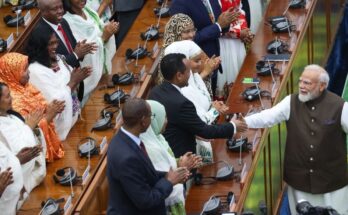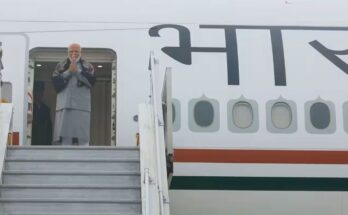By D.C.Pathak
The episode of the killing of 20 Indian soldiers in an attack carried out by PLA — after it was questioned for its unauthorised presence on a point on LAC in Galwan valley — on June 15, unravelled the cumulative tension that had been brewing between China and India because of the military build-up undertaken by PLA in Eastern Ladakh in the period following the abolition of J&K’s special status by the Indian Parliament, the Sino-Pak alliance coming into full play against India beginning from the firm support extended by China to Pakistan on the issue of action against Pak-based terrorists and the economic pressure mounted on China by the US-led international campaign supported by India in the wake of the corona pandemic.
Post-Doklam, China had put PLA in direct control of LAC, obviously in pursuit of a long-term strategy of putting India in its place while consolidating the Chinese hold on Pak-Afghan-Kashmir tri junction in a geopolitical contest with US and stepping up its plans for dominating the vital South China Sea. What has really made China push India into opposition is its strategic investment in CPEC cutting into the territory of POK which, it felt, was threatened by India’s move of taking over direct control of Ladakh as a newly-created UT and appointing the first CDS to coordinate the defence preparation and planning for the country.
Through the numerous summit interactions between Prime Minister Modi and President Xi Jinping and the talks at various levels, China maintained the line that it had ‘preference for peace and negotiations’ on the border issues — which is a Chinese strategy of buying time that India understood so well — and India logically responded to it by invoking the principle that so long as there was no provocation or aggressiveness shown by the other side, such talks were welcome. The changed profile of Ladakh and the meeting of minds between Pakistan and China apparently led China to blatantly go ahead with the military build-up in Eastern Ladakh while claiming adherence to the idea of evolving a ‘consensus’ — spoken of by the leaders in the summit meetings — on not letting differences develop into disputes. India’s security and foreign policy establishment had a good look at China through the cycle of interactions and if India gave some rope to that country during the course of recent developments on the LAC, this was a legitimate approach only to be followed so long as China did not cross the red line — something that the latter did subsequently on June 15.
Some analysts have rushed to see the failure of ‘Intelligence’ in the Galwan valley episode which may not be a correct reading of the situation there. Security fails on three counts — failure of ‘information’ itself, faulty ‘assessment’ or inadequacy of ‘response’. The military build-up of Chinese troops along LAC was not ‘clandestine’ in the sense that it was not hidden from the eyes in the sky, human sight of our border patrols or the signals’ watch of our forces. Its pace over the recent weeks was noteworthy and could be linked to the post-Art 370 period that had created a new context.
The Chinese moves on the ground were taking place, however, in the backdrop of continuing consultations between the two sides at the diplomatic and military levels, in which the hopes of maintaining border peace were being expressed. The crucial point in such situations is an assessment of what the adversary was planning to achieve finally. It is difficult to believe that a professional analysis of the developments, on our side, would not have taken into account the possibility that the Chinese were following their known ‘two steps forward one step backward’ strategy in Eastern Ladakh. This would require a calibrated response that India was setting out for.
When India was left with the only option of showing a firm counter-offensive response, Prime Minister Modi himself came to the front and on a visit to Nimu near the border in Ladakh on July 3 — where he interacted with our soldiers — he warned China in no uncertain terms that ‘the age of expansionism’ was over and that India’s determination to protect its territory was ‘as high as the Himalayas’. India was prepared to deal with a situation where the process of talks would reach a dead end. The Chinese troops could not have been confronted ‘in their tracks’ on the other side of LAC and, likewise, China also would be in no position to launch a ‘war’ on the border when it was preoccupied with challenges on other fronts — from economic to marine defence. Raising the level of diplomatic and military pressure by India to demand retracing of steps by the PLA to the status quo ante was the right move to start with.
Now, ‘disengagement’ of troops from Galwan valley, that was the scene of June 15 clash, has been agreed upon after long talks at the military level culminated into a direct interaction between NSA of India and his counterpart as the Special Representative — China’s Foreign Minister — on July 5. The Chinese rightly believed that NSA alone could speak for the Prime Minister of India. It seems the Chinese were also impacted by the surge of international opinion that had condemned the attack of PLA on Indian soldiers engaged in border patrolling and added to the optics of China getting singled out as an aggressive state.
The withdrawal by both sides from Galwan valley as also from Hot Springs sector did start on the following day and it has to be seen if the process will be taken to a wider canvas and lead to a similar disengagement at crucial places like Pangong lake and Depsang in Eastern Ladakh paving the way for ‘deescalation’ through restoration of the status quo subsequently. The Chinese Foreign Ministry spokesman said that ‘both sides were taking effective measures to disengage and ease the situation on the border’ and hoped ‘India will meet China halfway and closely communicate through diplomatic and military channels to work together to cool down the situation’. There seemed to be no owning of responsibility by the Chinese for the June 15 attack and it is not ruled out that China having warded off a situation of global isolation and universal criticism it hand landed in, was preparing for a long-drawn negotiation process only to maintain its military build-up in Ladakh. The meeting of Working Mechanism for Consultation and Coordination (WMCC) — the bilateral forum at Joint Secretary level — on July 10 may give a further insight into what lies ahead.
India has to keep up the pressure for return to status quo ante and consolidate its defence against the Sino-Pak axis in the meanwhile. It should maintain the demand for vacation of Aksai Chin by China and of POK by Pakistan and keep up the opposition to CPEB. A development of grave concern for India nearer home is the lasting collusion that has finally been established between China and Pakistan in military and geopolitical spheres. India should hit Pakistan hard in POK in legitimate pursuit of terrorists and stall the progress of CPEB in the process. China cannot engage India in a ‘war’ — going beyond playing tactical games for retaining its gains on the LAC in Eastern Ladakh. Meanwhile, the diplomatic campaign in the democratic world against the Sino-Pak gang-up has to come into full steam. The strategic balance against China has to be strengthened through a credible stand on the realities of the South China Sea, Tibet and Afghanistan. The nuclear deterrent does not work for one side alone.
A new security scenario obtains for India in 2020 and the political leadership of India is going to be judged primarily on its performance on the national security front even in a situation of economic downturn. If the indigenous approach to rebuilding the economy achieves moderate success, then the people’s support to a strong profile of India against China and Pakistan will remain strong. Our companies are picking up international business individually which is bringing in optimism. India has handled the China issue judiciously — consolidation of our defence should go on in the months ahead. India is a major power known for its peace credentials and non-expansionist profile. The world opinion favours its case against China and Pakistan. India’s defence forces can deal with any mischief of China and Pakistan — working singly or in collusion — on the borders. Unlike in the Cold War era of the past when ‘non alignment’ as an ideology of equidistance between Communism and Capitalism might have made some sense, in today’s world India has a logical reason to be in the democratic camp in the context of US-China relations assuming the matrix of a new Cold War in economic, political and military spheres.
(The writer is a former Director Intelligence Bureau)




